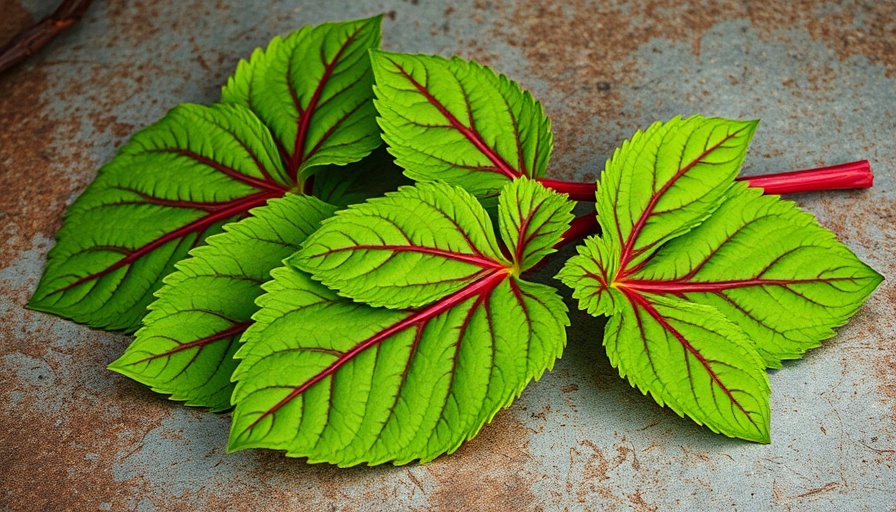
Uncovering the Superfood: Amaranth
Amaranth is not just an attractive addition to your garden; it’s an extraordinary plant packed with nutritional benefits. Both its leaves and seeds have distinct uses, making it a versatile choice for culinary enthusiasts and health-conscious individuals alike. Known for its vibrant colors and unique taste, amaranth deserves a place in your garden, not just for its aesthetic appeal but for its impressive health benefits.
A Nutritional Powerhouse
One of the most compelling reasons to grow amaranth is its impressive nutrient profile. The leaves can contain almost twice the vitamin C of spinach, making them an excellent choice for boosting your immune system. Alongside vitamin C, amaranth is rich in iron and is a source of high-quality protein.
Additionally, amaranth leaves can be enjoyed fresh in salads or cooked in various dishes, showcasing their versatility. However, it’s important to note that amaranth contains oxalic acid, which can inhibit calcium and zinc absorption. Those prone to kidney stones may want to eat them in moderation, especially the mature leaves. Cooking methods such as boiling can help reduce oxalic acid levels, making the leaves safer to consume while still retaining some of their valuable nutrients, albeit at the cost of a few vitamins.
Growing Amaranth: Tips for Success
Growing amaranth is not only rewarding but also relatively easy, as the plant thrives in many conditions. Amaranth is heat and drought-tolerant, making it an ideal choice for summer gardens. For optimal leaf production, you should harvest them early; this ensures you enjoy the most tender and nutritious greens.
If you plan to grow amaranth for its seeds, allow the plants to mature post-frost, ideally selecting a variety suited for your climate. This process also allows you to enjoy the captivating visual appeal of flowering amaranth, which can brighten your garden with its bold colors and striking tassels.
Harvesting and Processing Amaranth Seeds
After investing time in growing amaranth, it’s crucial to know how to harvest its seeds properly. Once the plants have matured, you can thresh the seed heads to release the seeds, a practice that allows you to enjoy your homegrown amaranth in your kitchen.
Seeds can be consumed in various forms. They can be popped like popcorn, ground into flour, or cooked like other grains. Whether you’re incorporating amaranth seeds into your breakfast cereals or baking them into artisanal bread, the nutty flavor adds a unique twist to any recipe.
Amaranth in Culinary Creations
In the kitchen, amaranth stands out as a flexible ingredient. You can use mature seeds in baking or prepare them as a hearty addition to soups and stews. A delightful way to add amaranth to your diet is by making a hot cereal from its seeds, providing a warm and nutritious breakfast option.
The leaves, on the other hand, can be sautéed, steamed, or used raw, similar to spinach. Their vibrant colors can enhance the presentation of salads or elaborate main dishes, making them a favorite for both professional chefs and home cooks.
Building Community Through Gardening
As Emily Brooks often shares, gardening isn’t merely a solitary endeavor; it builds community and connection among those who partake in it. Growing unique and nutrient-rich plants like amaranth can spark conversations about healthy eating and environmental stewardship. Whether you share gardening tips or exchange seeds with neighbors, the act of gardening fosters relationships that enrich local communities.
Why Amaranth Should Be on Your Radar
Amaranth is more than just a plant; it’s a superfood that represents the intersection of health, beauty, and sustainability in gardening. By growing amaranth, you’re not only adding nutritional value to your diet but also contributing to more sustainable practices in your community. It emphasizes the importance of plant diversity and encourages others to join in organic gardening methods.
So, next time you’re planning your garden layout, consider incorporating amaranth among your vegetable gardening projects. It will benefit your health while adding beauty to your outdoor space.
Are you ready to make amaranth a part of your garden this season? Get growing and relish the benefits of this amazing supergreen!
 Add Row
Add Row  Add
Add 




Write A Comment